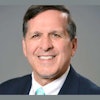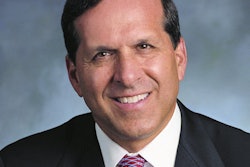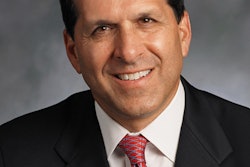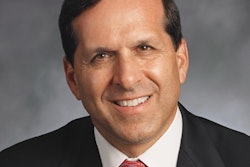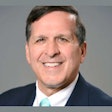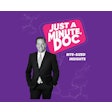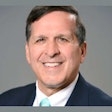
After 38 years of research, experience, and observation, Levin Group has identified a pattern that is historically typical of production growth in dental practices and is largely continuing to be valid today.
Understanding production
Production is a complex concept when it comes to identifying growth patterns in dental practices. In other articles, I have written about the four stages of entrepreneurial practice. As a quick review, these stages include:
Stage 1: The opening of a dental practice
- There is a small number of staff members.
- The dentist works extra hard to practice dentistry and manage the administrative aspects of the practice.
- The patient base begins to grow, and the energy is exciting and positive.
- A young practice will grow fairly steadily as new patients are added.
Stage 2: The growing dental practice
- As new patients are added to the practice, production increases rapidly.
- The practice needs more staff due to the growing volume of patients.
- The new staff members aren’t always fully trained in their positions.
- Additional systems must be put in place to help train staff and ensure that the practice runs smoothly.
Stage 3: Rapid growth moving into a plateau
- Practice production accelerates again as the practice develops certain staff systems to improve efficiency and performance.
- The practice may add an office manager, allowing for greater delegation by the doctor and better implementations of production growth strategies.
- Doctor income becomes satisfactory for day-to-day lifestyle factors and retirement savings.
- The patient base reaches a maximum capacity relative to the practice’s physical space and clinical capacity.
- The practice may likely reach its first plateau at around five years due to insufficient staff, staff training, and an inability to manage more patients than the current volume. This results in practices beginning to identify strategies to be more efficient in day-to-day practice.
Stage 4: The highly productive practice
- The practice often moves toward a production growth cycle as several years of plateau become frustrating for the doctor and team. This takes place due to exposure to webinars, seminars, consultants, or other knowledge base growth opportunities. It also often includes adding more team members to handle capacity, increasing the number of chairs, or even moving the physical location of a practice.
- Very few practices ever reach this stage.
- The practice is highly efficient and is well-run by the team and office manager.
- The dentist can focus almost exclusively on clinical care.
Most practices will not reach stage 4. In fact, in 15 years, many practices have reached capacity and will no longer grow, other than a small number each year, keeping up with or falling slightly behind overall inflation. This is often due to physical limitations on the part of the doctor, the number of hours, the number of chairs, and the scheduling system. It is at this point that the practice is in a long-term plateau and may remain there throughout the doctor’s career.
Levin Group has a 30-year ongoing study of the top 10% producing practices that shows 17 principles that top-producing practices generally have in common. One of these principles is that most of these practices did not enter the top 10% overnight or get there in significant large jumps in production. Most of them are very steady in their ongoing growth, following the pattern as explained above but avoiding plateaus and declines.
New opportunities for production growth
Today, there are new and unique opportunities to have steady growth in production throughout an entire career. Some of the examples that allow for steady ongoing production include the following:
- Implementing excellent systems. Dentistry has a staffing shortage, and team members have less training than ever before. The best method to train at the highest level and bring staff members to excellence in performance is to implement systems. In a sense, it would be like taking a moderate athlete and teaching them the systems where they can go from moderate to elite quickly, because the systems will automatically take them there if followed. The same is true for training of the dental team.
- Being an effective leader and creating a beneficial office culture. These are critical factors that are often overlooked because they cannot be quantified. However, there is so much information about excellence in leadership today in the business world that can help the dentist and office manager excel and build a phenomenal culture and team with hard work, cooperation, support, appreciation, and a culture of positivity in approximately 12 months.
- Having an effective office manager. Top practices often have excellent office managers, and based on our research, it is not unusual for elite practices to have an office manager who has been in place for many years and was truly respected by the team.
- Employing technology. Technology has increased the potential of dental practices exponentially. In the business world, technology is often a solution for labor shortages, lack of skill sets, or inefficiency. Dental practices can also take advantage of technological advances by understanding workflow technology, digital integration, and all the amazing opportunities that are emerging.
Summary
Steady may be boring; however, aiming for overnight success usually results in practices experiencing big plateaus or declines along the way. According to the Levin Group’s 30-year study of the top 10% of practices, these practices typically enter the top 10% with steady growth. Using some of the recommendations above can help practices have strong and steady production that creates excellence in the practice and allows doctors to reach financial independence at a reasonable age.
Dr. Roger P. Levin is CEO of Levin Group, a leading practice management and marketing consulting firm. To contact him or to join the 40,000 dental professionals who receive his Practice Production Tip of the Day, visit LevinGroup.com or email [email protected].
The comments and observations expressed herein do not necessarily reflect the opinions of DrBicuspid.com, nor should they be construed as an endorsement or admonishment of any particular idea, vendor, or organization.


